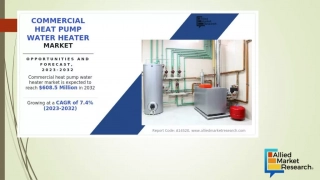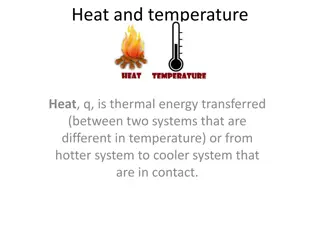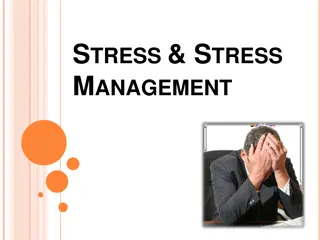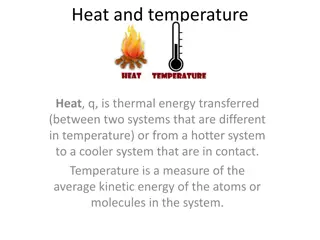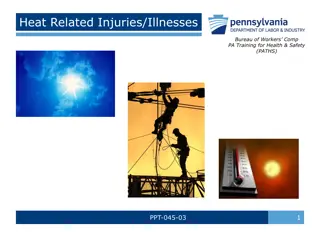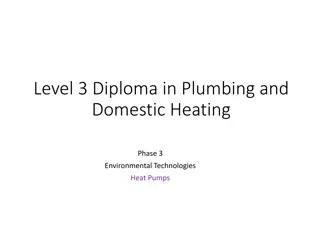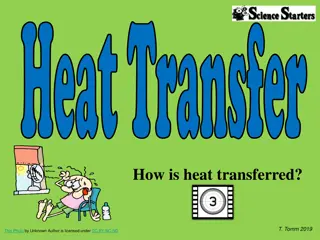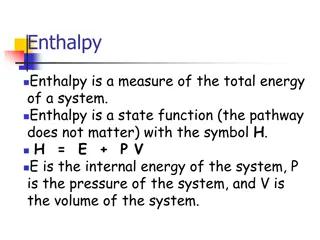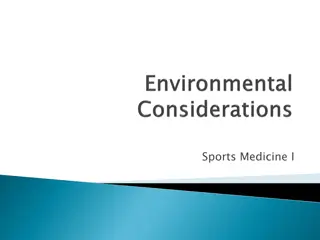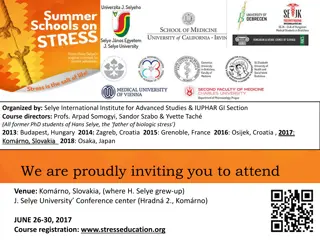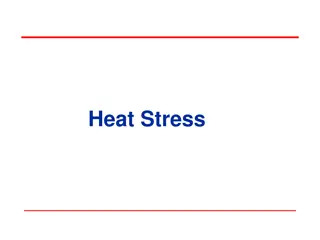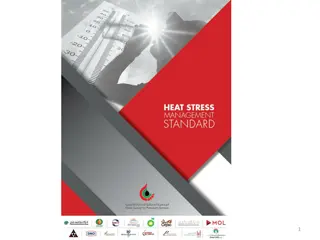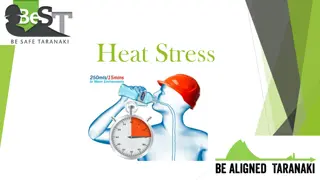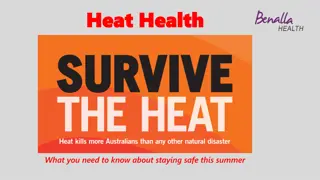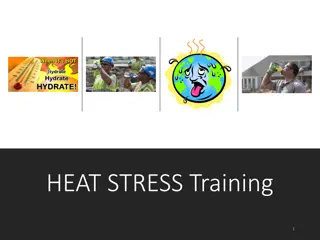Summer Safety Awareness Training for Heat-Related Stress Reduction
Understanding the risks of heat stress during summer and learning how to stay safe and enjoy the season by staying hydrated, taking breaks in the shade, and recognizing the signs of heat-related illnesses. This training covers factors to consider, who is affected, statistics on heat-related fatalities, and OSHA recommendations for staying safe in the sun.
Download Presentation

Please find below an Image/Link to download the presentation.
The content on the website is provided AS IS for your information and personal use only. It may not be sold, licensed, or shared on other websites without obtaining consent from the author.If you encounter any issues during the download, it is possible that the publisher has removed the file from their server.
You are allowed to download the files provided on this website for personal or commercial use, subject to the condition that they are used lawfully. All files are the property of their respective owners.
The content on the website is provided AS IS for your information and personal use only. It may not be sold, licensed, or shared on other websites without obtaining consent from the author.
E N D
Presentation Transcript
Summer Safety Bureau of Workers Compensation PA Training for Health & Safety (PATHS) PPT-137-01 1
Objectives To understand how to work and play safely in the summer sun by reviewing what precautions to take to reduce heat related stress. To have a safe and enjoyable summer under the sun by increasing self awareness. PPT-137-01 2
Heat Stress During warm weather, the body normally cools itself by perspiring. When the air temperature is the same or warmer than the body temperature, cooling the body is more difficult. When the humidity becomes higher, perspiration will not evaporate as quickly, preventing the body from releasing heat as fast as it normally would, causing various levels of heat stress. PPT-137-01 3
Factors to Consider Ability to cool down is determined by the following: Physical condition Physical demands Direct sun exposure (no shade) High temperature and humidity Limited air movement Proper hydration PPT-137-01 4
Who is Affected? Those who are 65 and over Young Children Pets YOU ARE! Friends Workers Co-workers Neighbors Everybody!!! PPT-137-01 5
Statistics Heat is the #2 weather-related killer in the United States; Greater than hurricanes, floods, and lightning strikes combined. Only tornadoes had more fatalities. PPT-137-01 6
So, What do You Do? OSHA recommends three simple words: WATER REST SHADE! PPT-137-01 7
Three Simple Words WATER drink water (or electrolyte beverages) often, even before you become thirsty REST take frequent breaks away from the sun s rays; recommended air-conditioned or cool, well-ventilated area SHADE anywhere people can take shelter from the sun (tree, canopy, indoors); recovery area PPT-137-01 8
Avoid Dehydration For proper hydration, the recommended amount is 6 ounces (or medium size glass) every 15 to 20 minutes. Avoid beverages containing alcohol, caffeine, or high amounts of sugar. Dehydration level of 2% of body weight - Impaired cognitive and physical performance Dehydration level of 4% of body weight - Shortness of breath, headaches, dizziness and reaction time reduced PPT-137-01 9
Simple Check Good, probably well hydrated. Drink water normal. OK / fine. drink a little water now. Warning: Drink about 1/2 bottle of water within the hr, or whole bottle if you're outside and/or sweating. Caution: Drink about bottle or of water immediately; or a whole bottle of water if you're outside & sweating. STOP: Drink 2 bottles of water immediately. If your urine is darker than this red or brown, there may be another medical condition. Seek medical advice. Color of Urine PPT-137-01 10
Types of Heat Stress Mild Medical Condition Heat Rash Heat Cramps Heat Syncope Heat Exhaustion Heat Stroke SERIOUS MEDICAL EMERGENCY PPT-137-01 11
Heat Rash Symptoms: Red cluster of pimples or small blister Can happen anywhere on body - Neck, arms - Groin, legs First Aid: Work in a cooler area if possible Keep area dry Baby powder may be used for comfort PPT-137-01 12
Heat Cramps Symptoms Muscle pain Muscle spasm First Aid Stop all activity Sit in a cool place Drink clear fluids Reduce activity for several hours Consider seeking medical attention if other health conditions exist PPT-137-01 13
Heat Syncope Symptoms: Fainting Dizzy Light Headed First Aid: Sit or lie down in cool place Stay quiet Drink cool water/fluids slowly PPT-137-01 14
Heat Exhaustion Symptoms: Rapid heart beat Nausea Heavy sweating Weakness Dizziness Fast, shallow breathing Elevated body temp First Aid: Rest in a cool area Drink plenty of water Take a cool shower or bath Seek medical attention if necessary PPT-137-01 15
Heat Stroke (Hyperthermia) Signs and Symptoms Confusion Irrational behavior Loss of coordination Lack of sweating Hot, dry skin Abnormally high body temp First Aid: GET MEDICAL ASSISTANCE! Move to a cool, shaded area Remove excess clothing and apply cool water to the body PPT-137-01 16
Precautions This is a medical emergency! Never allow this person to return to work or go home without medical attention & clearance. Return to work will vary depending on individual s physical fitness & timing of first aid treatment PPT-137-01 17
Protect Yourself Drink plenty of fluids; never become thirsty Take frequent breaks Wear light-colored, loose-fitting clothing Monitor your physical condition Schedule heavy work early or late in the day PPT-137-01 18
TAKE CAUTION! NEVER leave anyone in a closed parked vehicle Children Pets Infants Elderly Physically ill PPT-137-01 19
Vehicle Heating Dynamics The sun s radiation can heat a dashboard, steering wheel, or child seat up to 180-200 degrees Fahrenheit It also warms the air trapped inside the vehicle: In 10 minutes: Outside 80, inside 99 degrees In 20 minutes: Outside 80, inside 109 degrees In 30 minutes: Outside 80, inside 114 degrees In 60 minutes: Outside 80, inside 123 degrees PPT-137-01 20
Elderly Check in on them Arrange visits Arrange trips outside the home PPT-137-01 21
When Gardening is a Must Limit outdoor activity Avoid working between 10 am 4 pm Rest in the shade Use hats Use suntan lotion SPF 30 or higher Eye protection PPT-137-01 22
Effects of Sunburn Sunburn is the sun s ultraviolet radiation, which can significantly retard the skin s ability to shed excess heat Must apply sunscreen (SPF 30 or higher) to avoid redness and pain. Severe cases could be swelling of skin, blisters, fever, and headaches. Ointments may be used for blisters, sterile dressing if blisters break. If serious, seek medical attention PPT-137-01 23
Review Heat rash Keep area dry; work in cooler area if possible Heat cramps Increase fluids and be aware of other conditions Heat syncope Can lead to Heat stroke or exhaustion Monitor to prevent further stress Heat stroke & Heat exhaustion Most dangerous types; seek medical attention Move to shaded area; apply cool water to body Water Rest - Shade! PPT-137-01 24
References Occupational Safety and Health Administration (OSHA) www.osha.gov Centers for Disease Control/National Institute for Occupational Safety and Health (CDC/NIOSH) www.cdc.gov/niosh National Weather Service/National Oceanic and Atmospheric Administration (NWS/NOAA) www.nws.noaa.gov PPT-137-01 25
Questions PPT-137-01 26
In that case HAVE A GREAT SUMMER! PPT-137-01 27
Contact Information Health & Safety Training Specialists 1171 South Cameron Street, Room 324 Harrisburg, PA 17104-2501 (717) 772-1635 RA-LI-BWC-PATHS@pa.gov Like us on Facebook! - https://www.facebook.com/BWCPATHS PPT-137-01 28
Other Related Programs Other Power Point programs specific to summer safety include: Backyard and Wildlife Safety Fire Extinguisher Use Golf and Utility Cart Safety Heat-Related Injuries and Illnesses Poison Ivy Rabies Ticks and Lyme Disease West Nile Virus Please contact us for free copies of the above programs and a list of all other available programs at: RA-LI-BWC-PATHS@pa.gov PPT-137-01 29


